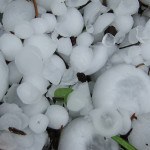The various winter storms that brought snow and bitter cold to the United States in January took more than 50 lives and are expected to result in direct economic losses of about $3.5 billion and insured losses of more than $1.6 billion.
According to Aon Benfield’s Impact Forecasting, four separate stretches of winter weather affected the United States in January, bringing heavy snowfall, sleet, freezing rain, ice, gusty winds and bitterly cold Arctic air to much of the country.
The most significant – and costliest – period occurred during the second week of the month, where at least 21 people were killed. More than 20 inches of snow fell in the Great Lakes and Ohio Valley, while freezing rain coated the Northeast and Mid-Atlantic. The coldest temperatures in two decades then descended into the central and eastern U.S., with at least 20 states recording wind chill values minimally at -30 degrees F (-34 degrees C). Widespread property damage and severe travel delays occurred as a result of the cold and snow. Total direct economic losses for this period were estimated at $3 billion, while insured losses were listed in excess of $1.4 billion.
Three other stretches of severe weather combined to kill at least 33 people and caused more than $500 million in economic damages and insured losses approaching $200 million. Business interruption losses were elevated due to severely delayed transport and/or closed commerce, the Impact Forecasting report said.
According to Steve Bowen, senior scientist and meteorologist at Impact Forecasting, the current winter season in the U.S. has already become the costliest year for the winter weather peril since 2011.
“With higher-than-average snow totals, ice, and some of the coldest temperatures in nearly two decades affecting much of the country during January, the combination of physical damages and business interruption costs have quickly aggregated into direct economic losses well into the billions of dollars. The elevated losses this year are a reminder to insurers that the risks associated with the winter weather peril remain significant,” Brown said.
The Impact Forecasting January 2014 Global Catastrophe Recap report noted that the United States was not the only part of the world experiencing severe weather in January. Winter conditions were also prevalent in Asia with torrential rains causing widespread flood damage and dozens of fatalities in parts of Asia and South America. China’s Ministry of Civil Affairs (MCA) reported that nearly $170 million in economic damages had occurred to agricultural land and crops due to snow and freezing temperatures. In Thailand, at least 63 people died after the coldest air in 30 years arrived descended into the country. An additional 25 cold-related fatalities occurred in India.
Torrential rainfall enhanced by the nearby passage of Tropical Storm Lingling spawned widespread flooding and landslides across the southern Philippines. At least 79 people were left dead or missing. In Indonesia, seasonal rains caused severe flooding and landslides throughout the archipelago, which killed a combined 71 people.
Meanwhile, an active windstorm season continued in Europe during January, with windstorms Anne and Christina each affecting western and northern sections of the continent. Windstorm Christina was the most significant as it brought heavy rains, gusty winds and an elevated tide to the United Kingdom, France and Scandinavia. Economic damages in Ireland alone were estimated at roughly $405 million, according to the report.
A magnitude-6.2 struck New Zealand’s lower North Island with an epicenter 34 kilometers (21 miles) south-southeast of Palmerston North. Most damage was due to broken windows, cracked walls, fallen chimneys, and fallen indoor contents. The New Zealand Earthquake Commission received at least 2,876 claims with payouts expected to reach the millions of dollars (NZD).
Mount Sinabung continued to erupt throughout January into early February after first beginning in September 2013. The eruptions led to the deaths of 32 people in Indonesia’s North Sumatra, where 32,000 residents were forced to evacuate their homes. Total economic losses were listed minimally at IDR1.0 trillion ($83 million).
The combination of extreme heat, dry conditions and gusty winds led to hundreds of bushfires to burn in multiple Australian states. At least two people were killed. The most significant bushfire was registered in Western Australia’s Perth Hills region, where at least 56 homes were destroyed. The Insurance Council of Australia (ICA) declared the event a catastrophe and expected payouts to top $13 million.
Tropical Cyclone Ian tracked through Tonga as a Category 4 storm, killing at least one person. The storm left severe damage to the island chain of Ha’apai, where 75 percent of all homes (1,130) were impacted.
Source: Aon Benfield
Was this article valuable?
Here are more articles you may enjoy.

 Poll: Consumers OK with AI in P/C Insurance, but Not So Much for Claims and Underwriting
Poll: Consumers OK with AI in P/C Insurance, but Not So Much for Claims and Underwriting  California Sees Two More Property Insurers Withdraw From Market
California Sees Two More Property Insurers Withdraw From Market  Report Using Aerial Imagery Keys in on Hailstorm Risks to Colorado Homes
Report Using Aerial Imagery Keys in on Hailstorm Risks to Colorado Homes  Viewpoint: The Impact of Behavioral Health on Workers’ Comp
Viewpoint: The Impact of Behavioral Health on Workers’ Comp 